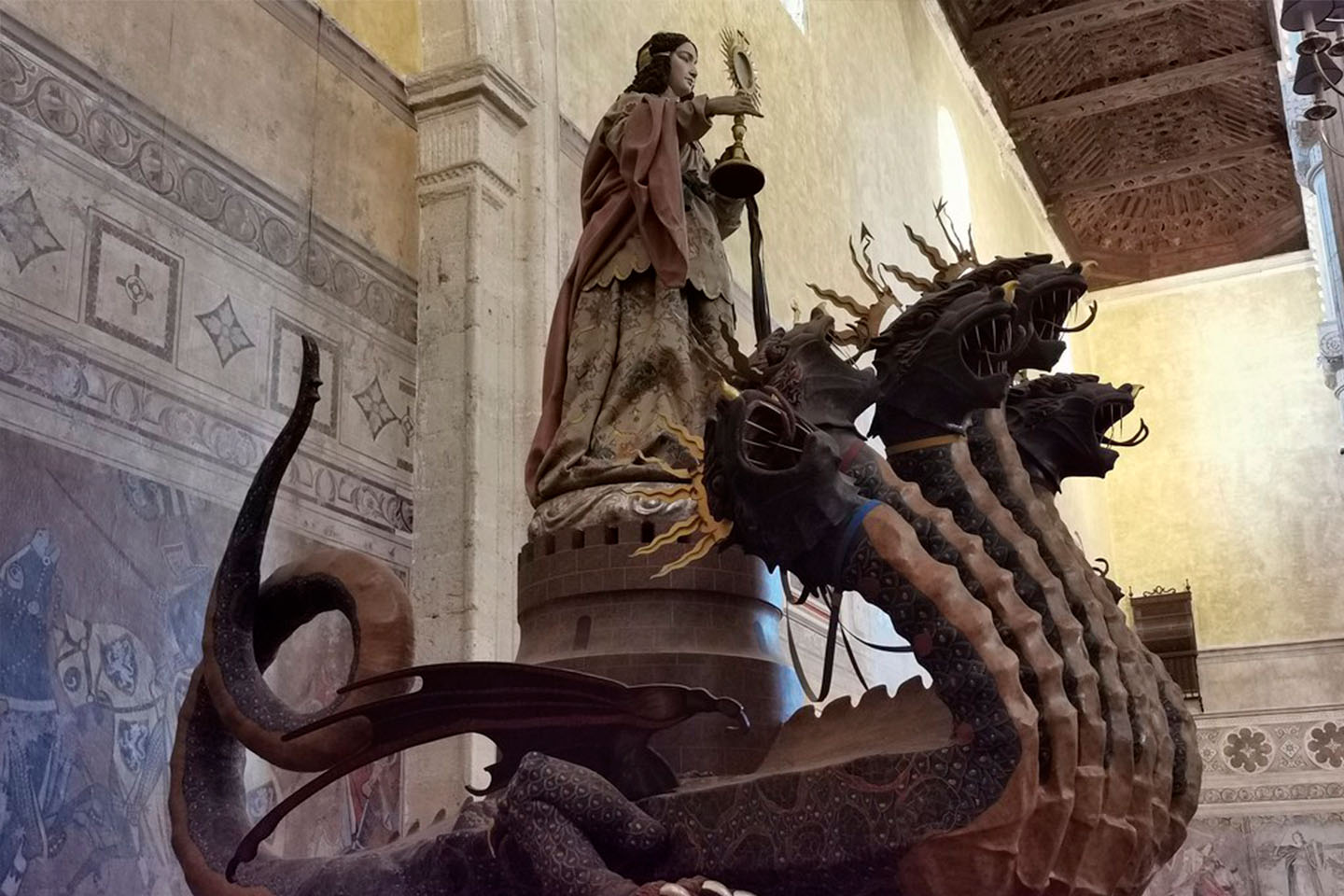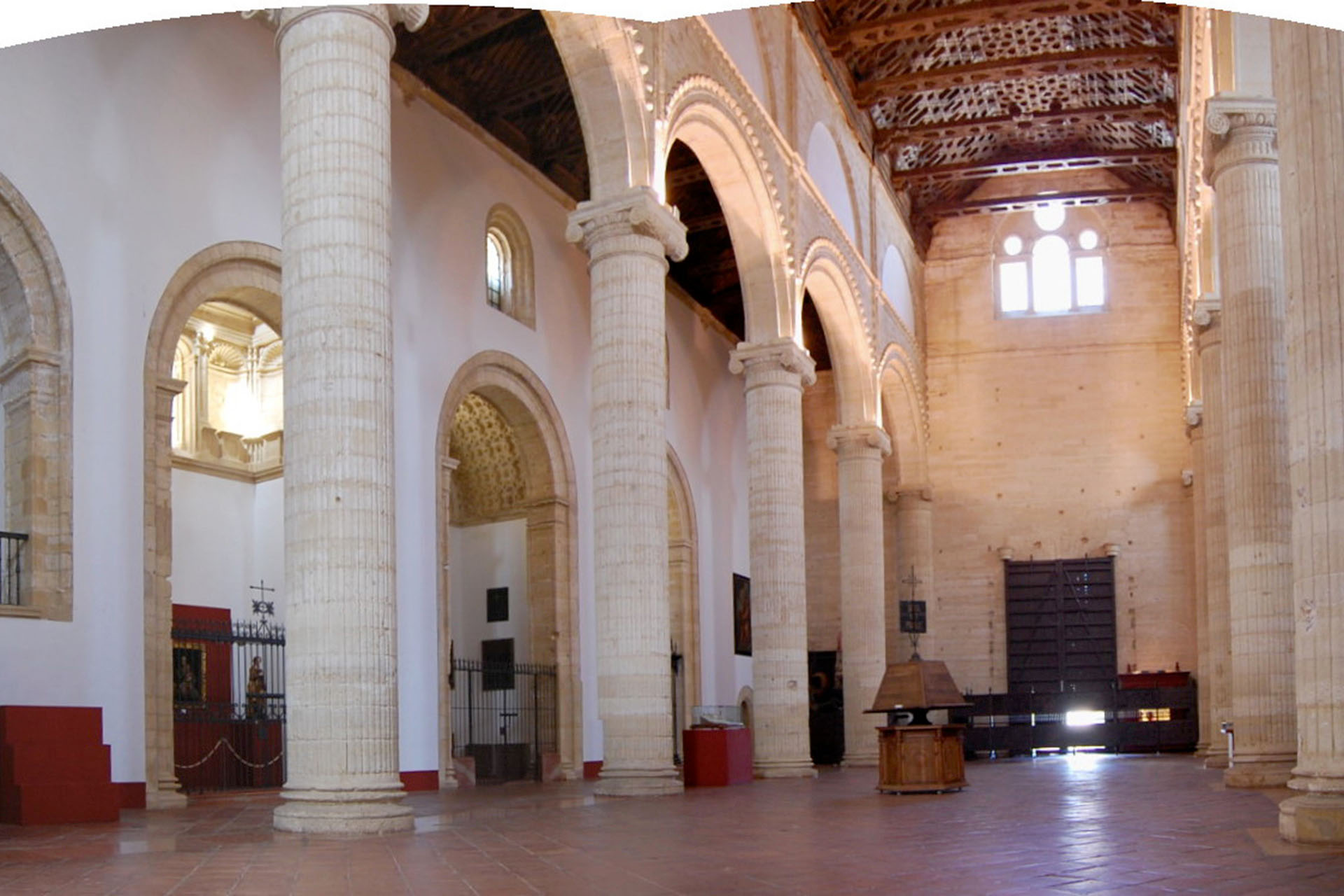Historical information
The construction can be dated in the years 1514 – 1550. It was founded on the initiative of the Bishop of Malaga Don Diego Ramírez de Villaescusa. In the works of the temple, numerous ashlars from the Roman city of Singilia were used. The traces were initially made following Gothic models, as we can see in the header, to conclude the works within the purest Renaissance style.

Its architecture
The exterior of Santa María stands out for its grandiose façade, undoubtedly the most monumental in Antequera. Made entirely of ashlar stone, the tracist of this façade articulated it in three streets separated by buttresses, in each of which a door opens, the central one being greater than the lateral ones.
In the attic we find a blind balustrade, very Renaissance. Analyzed in detail each of its elements, we see how they want to respond to a new style, disconnected from the Gothic. Perhaps the fluted conical pinnacles are the elements of greatest rarity. The ornamentation of the façade, is located mainly in the three large niches, responding to a very geometrizing decorative design, with some mannerist elements.

The interior is currently practically empty of ornamental elements and altarpieces, since the temple is not dedicated to worship, but to host concerts and traveling exhibitions. It is shown as a beautiful columnary hall with a basilica plan in which the three naves are separated by imposing columns of Ionic order. On these are arranged five semicircular arches on each side, decorated with pomas or pearls. To achieve a greater height in the central nave, a body of discharge arches was arranged, as a false blind clerestory. In its coverage is when a greater distance from the Renaissance formulas is noticed.
The Main Chapel, rectangular, very deep, is covered with vaults of Gothic-Mudejar style, which draw two large stars, six and eight points. The clarity and luminosity of the chapel is due to the elegant Florentine windows, an element that significantly accentuates the Italianism of the entire interior. The rest of the chapels of this Collegiate Church, open to the lateral naves and independent of each other, respond to different types and times. Special attention is paid to the three Mudejar armors that cover the naves, built before the middle of the sixteenth century. The central one is rectangular and shows in its skirts and almizate a complex decoration of loop based on stars of different sizes. The armors of the side naves are octagonal and follow in their design programs similar schemes to those used in the plant.
Contact:
Address: Plaza de Santa María s/n Antequera, Málaga
Schedule: Monday to Sunday: 10:00h to 18:00h
Phone: 951 70 07 37
